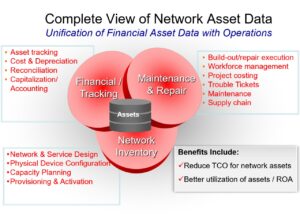Program Management
Are you looking for a way to manage your initiatives more efficiently? Have you been struggling to keep track of the different stages of your projects? If so, our initiative lifecycle management system is here to help! We provide an easy-to-use platform that will help you organize and manage all aspects of your initiatives. Keep reading to learn more about how this system can benefit your business!

What is Life Cycle Management?
Life Cycle Management (LCM) is an integrated concept for managing the total life cycle of goods and services toward a more sustainable production. In our company, we provide LCM services for our customers, which include product design, development, manufacturing, and post-sales support. By following a structured DLM process, our customers can achieve improved data security, improved data quality, and improved operational efficiency.
In addition to our company-wide services, we also offer specialized services for specific industries, such as automotive, medical equipment, and video games. By providing comprehensive LCM services to our customers, we help them achieve increased sustainability performance.
If you are interested in learning more about LCM and how it can help your organization, we recommend reading the article “A Guide to Life Cycle Management” on the website of the United Nations Environment Programme (UNEP). We hope you find this article helpful!
Benefits of Outsourced Product Lifecycle Management
At our company, we believe that outsourcing product lifecycle management is a valuable investment. Outsourcing PLM enables us to unify our product value chain with integrated business processes, which leads to faster times to market and improved quality products. Here are some of the benefits that we have experienced so far:
1. Increased flexibility with supply chain management. By having our PLM software on a single platform, we are able to better connect and align our data, processes, and technology. This has led to significant reductions in development costs and expedited the time to market for new products.
2. Improved learning capacity and knowledge accumulation rate. By expanding our knowledge, we have become better equipped to handle future challenges and meet the needs of our customers.
3. Better alignment of the business process with the product lifecycle. By implementing best-in-class PLM software, we have been able to improve the alignment of our business processes with the product lifecycle. This has led to faster realization of value for our stakeholders.
4. Increased efficiency and effectiveness in the product development process. By optimizing our product development process, we have been able to achieve higher levels of efficiency and effectiveness. This has led to lower development costs and faster time to market for new products.
Through these benefits, we have seen an increase in efficiency and effectiveness across all aspects of our business, which is why we believe that outsourcing PLM is a valuable investment. If you are interested in learning more about our PLM services, please do not hesitate to contact us.
How to Implement Life Cycle Management
In our company, we provide Initiative Lifecycle Management (LCM) to help our clients achieve their sustainable goals. LCM is a business management approach that can be used by all types of business (and other organizations) in order to improve their sustainability performance.
The goal of life cycle thinking is to avoid burden shifting by assessing a product’s use of natural resources and its impact on the environment, the economy, and society as a whole. LCM enables businesses to better understand their products and how they impact the environment, the economy, and their employees.
A good DLM process provides structure and organization to a business’s data, which in turn enables key goals within the process, such as data security and data governance. By following the steps of an effective DLM process, businesses can achieve these goals and improve their sustainability performance.
What Should be Evaluated When Implementing PLM?
In our company, we provide Initiative Lifecycle Management (ILM) which is a solution that aims to help companies improve their product quality and efficiency. When implementing ILM, it’s important to evaluate what should be monitored and managed. This includes evaluating the product value chain, connecting processes across the product lifecycle, and integrating PLM with a business approach. By doing this, companies can achieve better product quality and efficiency while reducing risk.
How Can PLM Help with Supply Chain and Development Teams?
Project management and product lifecycle management (PLM) software can help development and supply chain teams to work more strategically and collaboratively. By managing all product information in a centralized location, PLM software enables teams to make informed decisions about product development and procurement. This can help reduce the risk associated with new product launches, and speed up time to market. Additionally, PLM software can help improve product quality and ensure that products meet customer expectations.
Why is Product Lifecycle Management Essential?
In today’s industrial manufacturing environment, product lifecycle management (PLM) is essential in order to cope with the challenges of more demanding global markets. Product lifecycle management helps improve product design and cuts costs associated with product development projects. For example, PLM software helps lower product costs, improve product quality, and accelerate time to market. Additionally, understanding the concepts as a whole helps companies capitalize on opportunities faster.
How Does PLM Drive Business Results?
At MSSC, we believe that PLM drives business results by integrating data, processes, businesses systems, and people in an extended enterprise. By managing such comprehensive data in one place, PLM opens up new possibilities for more transparent financial reporting and analysis and for
Strategy-driven PLM transformation impacting a company on many levels can improve product design and cut development costs. Furthermore, by focusing on IS-driven process, PLM enables companies to manage their product lifecycle to support growth through expansion or M&A activity with scalable
Results: The results show that strategy-driven PLM transformation impacting a company on many levels results in improved product design and cost reductions. In addition to these tangible benefits, strategy-driven PLM also has a positive impact on employee satisfaction and organizational agility.
What to Consider When Planning a Technology or Transformation Initiative?
When planning a technology or transformation initiative, it’s important to consider a number of factors. First, it’s important to determine the urgency of the need for change. This includes analyzing existing operations, processes, strategies and technologies to identify areas in need of improvement. After defining the future state of the organization, it’s important to develop a clear plan for how to achieve that goal. This includes defining the technology and implementation plans, as well as the organizational changes necessary to make the transition successful. In our company, we provide initiative lifecycle management (ILM) services to help companies achieve these objectives. Contact us to learn more about how ILM can help your business achieve its digital transformation goals.
Benefits of Talent Lifecycle Management
One of the key benefits of Talent Lifecycle Management is that it helps organizations resolve issues that hamper employee engagement. By mapping out the employee journey in the same manner you map out the consumer experience, you can create a consistent set of processes that employees can follow throughout their career with the company. This allows managers to assess data and determine where the most value is at stake when it comes to talent. In addition, Talent Lifecycle Management helps organizations improve their reputation and retention rates for employees.
What Employees Need to Succeed in an Evolving Business Environment?
As businesses continue to evolve, it is important that employees are able to keep up. This is where Initiative Lifecycle Management (ILM) comes in. ILM is a management approach that provides business a systematic way of managing their sustainability issues.
ILM helps businesses to systematically identify, plan, do, check and act on sustainability initiatives. This cycle helps to ensure that initiatives are constantly moving forward, and that they are consistent with the company’s overall vision and mission.
By following the ILM cycle, businesses can ensure that their sustainability initiatives are effective and sustainable. employee engagement will also increase as they are able to share in the initiative and take ownership of it. As businesses continue to evolve, ILM is an important tool for employees to keep up.
Are you looking to maximize your company’s benefits program? Do you want to ensure that your employees are getting the most out of their benefits package? At our company, we offer comprehensive Benefits Management services that will help you do just that! In this blog post, we’ll discuss how our services can help make your employee benefits program a success.

What is Benefits Management?
Benefits management is the process of planning, implementing and monitoring employee benefits in an organisation. This can involve everything from providing basic insurance to providing a range of flexible benefits such as childcare and health care. Benefits management can help to improve employee motivation and engagement, and can also help to boost company reputation.
At our company, we offer a range of benefits management services that are designed to help you improve your organisation’s performance. Our team of experts is dedicated to providing cost-effective programs that demonstrate your commitment to your employees and enhance your company’s reputation. Contact us today to learn more about our services!
How to Create an Employee Benefits Plan
At our company, we offer Benefits Management Plans that are designed to help our employees achieve the objectives we’ve established. In this article, we’ll outline the steps you need to take in order to create a benefits plan that’s right for your business.
1. Identify your organization’s objective.
One of the first steps in designing an employee benefits plan is to identify your organization’s objectives. This will provide overall guidance in establishing the benefits you offer.
2. Decide which employee benefits to offer.
Once you’ve identified your organization’s objectives, it’s time to decide which employee benefits to offer. This includes things like health insurance, retirement savings, and vacation time. Keep in mind that not all employee benefits will be applicable to every organization. It’s important to survey your employees and determine what they would benefit from the most.
3. Keep it simple, don’t overwhelm them.
Once you’ve decided on the employee benefits you want to offer, it’s important to keep them simple. This way, employees won’t feel overwhelmed by the process and they’ll be more likely to take advantage of the benefits you’ve offered.
By following these simple steps, you can create an employee benefits plan that’s tailored specifically to your business needs.
The Benefits of Offering Employee Benefits
Employee benefits are a crucial part of any business, and at our company we take pride in being able to provide our employees with the best possible benefits package. From health insurance to retirement savings plans, we have something for everyone at our company. Employee benefits are a way of showing our employees that we value them and their well-being, and that we are committed to their long-term success with our company.
Offering benefits to your employees is not only a moral obligation, but it also has a number of tangible benefits. For one, employee benefits help to attract and retain key employees. Not to mention, providing benefits can cost your growing business less in the long run. But the biggest benefit of all may be the intangible one: employee loyalty. When you offer great benefits to your employees, you create a bond between you and your team that is difficult to break. No matter what life throws your way, your loyal employees will be there for you.
Choosing the Best Employee Benefits Administration Software
At our company, we offer Benefits Management software that helps us plan and administer employee benefits packages and ensure compliance with government regulations. A benefits package plays a big role in retaining employee loyalty, so it is important to find the right software that meets your needs. Some of the factors to consider when selecting an employee benefits administration software are the features offered, the user interface, the compatibility with other software, and the pricing. Let’s take a look at some of the best options available and how they would suit your business.
Gusto is the all-in-one HR platform for growing businesses. With Gusto, you can manage your entire employee base from one platform, including hiring, pay, and benefits. It also has a robust communication feature that makes sure all your employees are up-to-date on company policies. Additionally, Gusto offers a variety of pricing plans that are tailored to fit your budget. If you’re looking for a comprehensive HR solution, Gusto is worth considering.
Shortlister is a great place to start if you’re looking for HR and benefits vendors. Shortlister has a database of over 8,000 HR and benefits vendors in the United States, so you’re sure to find the perfect fit for your organization. You can also research specific vendors to see if they have a good history of compliance with governmental regulations. If you’re ready to get started, Shortlister has a free trial that you can use to test out the software.
Setting Clear Objectives for Benefits Management
At our company, we offer Benefits Management. Benefits management involves setting clear objectives for the benefits that the company will achieve. This allows all members of the company to work more relaxed and without stress, and ensures that the company achieves its goals. By defining how you will achieve the vision/strategy, you will also be able to define the goals and expectations for the entire organization. Clear understanding of target benefits will also support project managers in their efforts to achieve the organization’s goals.
The Benefits of Insurance Products and Services
At MSSC, we understand the importance of insurance products and services for businesses of all sizes. Our team of licensed insurance agents can provide you with a wide range of options that will meet your specific needs.
Some of the benefits that our products and services offer include:
– Comprehensive insurance coverage for your business
– Managed insurance programs that simplify the administration of benefits
– Assistance in finding the right insurance for your business
– 24/7 customer service that can help you get the most out of your insurance policy
We are committed to helping businesses of all sizes get the insurance they need to protect their assets and promote their success. Contact us today to learn more about our range of products and services.
The Power of Appreciation in Employee Benefits
In today’s competitive business environment, it is especially important to create a positive work environment that promotes employee loyalty and satisfaction. One of the best ways to do this is through social recognition programs. These programs allow you to actively connect with your employees and show them how much you appreciate their hard work and dedication.
Through appreciation, you can reduce employee turnover and improve retention rates. In addition, studies have shown that companies with employee recognition programs have a 31% lower voluntary turnover rate, which is huge given the cost of disengaged employees. Moreover, employees care a whole lot more about company success when they feel appreciated, which leads to better results. So, if you want to keep your employees happy and productive, make sure to create a social recognition program at your company.
The Impact of Tangible Benefits on Businesses
At our company, we focus on tangible benefits management. This process helps us monitor our projects and make sure they deliver benefits to our business. When done well, service design has several positive and long-term impacts on business operations. For example, it improves your customer experience and the efficiency of your business. Additionally, engaging customers significantly impacts business outcomes. For example, satisfaction scores are usually measured using a scale from 1 to 5, with 1 being the least satisfied and 5 being the most satisfied. Finally, tangible benefits are much more predictable than intangible ones, which means companies can use this information to develop strategy. As a result, managing benefits is essential to success in any business.
Maximizing Your Return on Investment in Benefits Management
At our company, we understand the importance of maximizing your return on investment (ROI) in benefits management. Our team of experts is dedicated to providing you with the best possible service and advice in this area, so you can make the best possible decisions for your business.
Many factors go into making an effective benefits management system, including ensuring that all employees are properly trained and up-to-date on company policies and procedures. In addition, it is important to measure the impact of benefits programs on employees and their overall job satisfaction. By working with our team, you can ensure that your organization is getting the most out of its investments in benefits management.
We hope this article has given you a better understanding of the benefits of implementing an effective benefits management system. Contact us today to discuss your specific needs in this area. We would be happy to help you reach your goals!
Why Employees Need to be Involved in Benefits Planning
It’s no secret that benefits are one of the main reasons employees stay with a company, and at our company we take pride in offering benefits that are just right for our employees. In order to make sure that all of our employees are fully aware of their benefits and know how to access them, we always encourage them to be involved in our benefits management process.
Benefits management is an important process that helps us determine which benefits employees qualify for, including health, dental, disability, retirement accounts and 401K. By being involved in this process, employees can make sure they are getting the most out of their job and their benefits package.
Employees who are not familiar with their benefits may be surprised at how much they can get by working with us. By taking the time to learn about our benefits, employees can create a solid understanding of their benefits and how to access them. In addition, this knowledge will make them more likely to stay with our company for years to come.
Thank you for reading!
At our company, we believe that employee involvement is essential to ensuring that all of our employees receive the best possible benefits package. By encouraging employees to be part of the benefits management process, we can ensure that they understand their benefits and how to access them. As a result, they will be more likely to stay with us and enjoy their job.
Are you looking for ways to engage your stakeholders and build better relationships? At our company, we offer stakeholder engagement service that helps facilitate dialogue between your organization and its stakeholders. Through this blog post, we will discuss the various steps and strategies for effective stakeholder engagement.

What is Stakeholder Engagement?
At our company, we believe that stakeholder engagement is important in order to ensure that our stakeholders are aware of the projects we are working on and understand the impacts that our work has on them. We offer a process that will take you from the identification of your stakeholders to the engagement process itself.
Why is it Beneficial to Your Business?
Stakeholder engagement is beneficial to your business because it allows you to proactively consider the needs and desires of anyone who has a stake in your organization. This process allows you to build a strong relationship with those who are important to you, which can help you solve problems before they happen and anticipate issues before they arise. By engaging with stakeholders early and often, you can create a foundation for effective strategy development and execution.
How to Evaluate a Stakeholder’s Aspirations
At our company, we offer a unique approach to stakeholder engagement. We use a stakeholder analysis to identify the key stakeholders and their interests. Next, we use dialogue and communication to understand their concerns and goals. Finally, we take action based on what we’ve learned. By doing this, we ensure that our organization’s critical priorities are met while also benefiting our stakeholders.
To begin, you need to identify the key stakeholders of your organization. This can be done by reviewing documents such as company policies or goals, meeting minutes, or surveys. After you have identified your key stakeholders, you need to understand their interests. This can be done by asking questions such as “What are your major goals for the organization?” or “What are the biggest problems that you face?” Once you have a better understanding of your stakeholders’ interests, you can begin to understand their concerns. This can be done by asking questions such as “What are your thoughts on this policy?” or “What do you think would be the best way to address this issue?” Finally, you can take action based on what you’ve learned. This can be done by implementing changes to company policies or taking actions that address the concerns of your key stakeholders. By doing this, you ensure that the critical priorities of your organization are met while also benefiting them.
Segmenting the Workforce to Maximize Change Management Efforts
At our company, we offer a stakeholder engagement approach that segment the workforce to maximize change management efforts. By doing so, we are able to better understand and communicate with each individual stakeholder and act upon the outcomes to improve operations. This approach involves engaging all stakeholders- virtual, face-to-face, and remotely- to create a comprehensive case for change. Additionally, through structured management activities, we are able to deliver on complex organizational change management initiatives while maintaining employee engagement. By understanding and leveraging the power of stakeholder engagement, your organization can increase its chances of success in the “new normal”.
7 Reasons Why You Need a Comprehensive Stakeholder Engagement Plan
If you’re unfamiliar with stakeholder engagement, you may be wondering why it’s such a key part of your strategic planning process. Here are seven reasons why it’s essential:
1. Stakeholder engagement helps to build trust and better relationships with stakeholders and communities.
2. Stakeholder engagement enables your company to understand and respond to the needs of all stakeholders.
3. Stakeholder engagement ensures that all voices are heard and that decisions are made in a transparent manner.
4. Stakeholder engagement enhances the credibility of your company and its products/services.
5. Stakeholder engagement reduces the risk of business failure by ensuring that all stakeholders are aware of the risks associated with the project.
6. Stakeholder engagement helps to ensure that the project is carried out in a responsible and sustainable manner.
7. In order to successfully engage stakeholders, a comprehensive stakeholder engagement plan is essential.
The Benefits of Education for Stakeholder Engagement
At our company, we believe that education is essential for effective and sustainable stakeholder engagement. We offer a variety of courses that focus on building relationships with those who have a stake in our organization- from employees to customers, to community members. Our courses help us to deepen our dialogue and understanding of important societal issues, and also provide opportunities for learning and growth. In addition to our courses, we also conduct regular workshops and events aimed at deepening dialogue with stakeholders. We believe that this kind of engagement is key to positive change in our schools, and we are committed to helping our students learn how to engage positively with the community around them.
Prioritizing Environmental Initiatives
At our company we offer Stakeholder Engagement services to help us prioritize our environmental initiatives. Through this process we ensure that we are working with the right stakeholders and that our initiatives are aligned with their interests. We take into account their level of engagement and their importance to our business when making decisions about which issues to focus on. By working with the right stakeholders, we can ensure that our environmental initiatives are successful and have the biggest impact.
Alliances and Promotion of Business Solutions
At our company we offer a Stakeholder Engagement strategy that is focused on developing and promoting business solutions that benefit all stakeholders. Through our partnerships and collaborations we are able to deliver improvements that benefit everyone involved. We believe that it is important to have a good relationship with all of our stakeholders in order to drive progress and success in our business. We approach our Stakeholder Engagement strategy with the goal of understanding each party’s concerns and working together to find common ground. By working together we are able to create a win-win situation for everyone involved. We hope that you will take the time to read our blog and learn more about our approach to Stakeholder Engagement. Thank you for your time.
Employees: The Stakeholders
At our company, we understand the importance of stakeholder engagement. We want to make sure that everyone who has a vested interest in the success of our company is involved in our strategy. We conduct regular employee engagement surveys to measure how committed our employees are relative to prior years and benchmark our scores against other leading companies. In addition, we involve key stakeholders in our strategic planning process, such as unions, customers, and suppliers. By building a strong relationship with our employees, we are able to provide the best possible service to our customers and benefit from everyone’s knowledge, commitment, and buy-in.
The Key Players in the Decision-Making Process
At our company, we believe that stakeholder engagement is central to improving accountability within our own organisation as well as to the wider market. By engaging with our stakeholders, we are able to understand their interests and needs and, as a result, make better decisions that benefit all involved.
Stakeholder engagement begins with understanding our stakeholders’ interests and needs. Once we know the positions of key players, we then need to define the objectives of our strategy. The first and most important step is to pin down both internal and external stakeholders. Internal stakeholders are those part of the company who have a vested interest in the success of the organization, such as employees, unions, and board members. Key stakeholders to be involved in strategic planning are those having a vested interest in the success of the organization. They include customers, users, suppliers, and interested community members who shape the working of the organization.
External stakeholders are those who have an indirect impact on our organisation, but who do not have a vested interest in its success. These include the public, customers, users, and suppliers. While these stakeholders have no direct influence on decision-making, their opinions may shape the way we act. With our four main stakeholder groups known, we need a strategic plan. The strategy for stakeholder management should align with the company’s objectives and priorities.
We believe that stakeholder engagement is not only important for our organisation, but also for every business striving for success. By listening to and engaging with our key players, we can build a strong foundation for future growth.
Are you a leader looking for ways to ensure that decisions are made in an effective and compliant manner? If so, our company provides governance frameworks that can help. In this blog post, we’ll explore how these frameworks can help ensure that your organization is making informed and responsible decisions.

Understanding Corporate Governance and its Requirements
As a business, it is essential to have a governance framework in place that will provide guidance to leadership and align the interests of shareholders. A governance framework can be considered as an environment of trust, ethics, moral values and confidence – as a synergic effort of all the constituents of the company.
There are a few key components to a corporate governance framework, including risk management and security risk. Risk management ensures that a company is able to identify and mitigate potential risks before they become problems. Security risk refers to the potential for harm that can come from unauthorized access to information or from the theft or destruction of valuable assets. By taking these measures, a company can reduce the likelihood that its assets will be stolen or damaged.
Another important part of corporate governance is shareholder engagement. This refers to the process by which shareholders are involved in the decision-making process and have a voice in how the company is run. It also helps to ensure that the company is responsive to the needs of its shareholders.
Overall, corporate governance is essential for companies of all sizes. By following a well-established framework, businesses can ensure that they are running smoothly and are delivering on their goals.
The Role of a Board of Directors in Governance
In our company, we have governance frameworks in place that help guide the direction of the organization. These frameworks include corporate strategy, risk management, and compliance with legal and financial frameworks. Board members must adhere to these frameworks in order to provide guidance and direction for the organization. Furthermore, the audit boards of directors play a critical role in ensuring the integrity of our financial reporting systems.
The Model Business Corporation Act and Company Law
The Model Business Corporation Act, which is based on the Model Employment Agreement, is a important corporate governance legislation in the United States. The Model Business Corporation Act establishes a legal framework for private companies, and it relaxes certain restrictions that are placed on private companies due to their nature. For example, the Model Business Corporation Act allows private companies to operate as limited liability companies. Additionally, the Model Business Corporation Act provides for certain protections for shareholders. Finally, the Model Business Corporation Act is influential in other countries because it is based on the Model Employment Agreement, which is a widely used corporate governance model.
The Benefits of Implementing Good Governance
At our company, we believe that good governance is essential for the long-term success of any organisation. By implementing a governance framework, we can help ensure that the management of the company considers the best interests of everyone, delivers long-term corporate success, and demonstrates that the company is in good hands. Furthermore, good governance and corporate culture should go hand in hand for the sustainable growth of the company.
By implementing proper governance procedures, we can help to ensure that everyone is accountable for their actions. This fosters transparency within the company, which creates trust among all stakeholders. In turn, this strengthens the company’s reputation and legacy.
The benefits of good governance are numerous and far-reaching. By creating a framework that supports accountability and transparency, we can mitigate the risk of fraud and corruption. Additionally, good governance helps to prioritise actions rapidly and accurately, preventing costly mistakes from being made.
Above all, good governance ensures that a company is in good hands and functioning at its highest regulatory potential. By ensuring that the management of the company considers the best interests of all stakeholders, we are ensuring that our organisation has a bright future.
IT Governance Frameworks for Companies
In our company, we provide several IT governance frameworks to help our clients manage their information technology risks. These frameworks include the ITIL framework, which is a best practice framework from strategy to design, and COBIT 5, which is a business framework for the governance and management of enterprise IT. By using these frameworks, our clients can measure their current performance and identify the ones that need improvements to support their business. Both areas can be subsumed under the topic of IT governance.
While all IT governance frameworks will have common elements, few frameworks are likely to replicate one another; each organisation has a unique business model. For example, one organisation may use a different framework for their internal operations than they do for their customers. By understanding which framework is most appropriate for your organisation, you can ensure that you are managing your information technology risks in a comprehensive and effective way.
How to Operationalize Governance Frameworks
6. How to Operationalize Governance Frameworks
In our work, we focus on the data governance framework introduced in the previous section. This framework considers your core business functions and seeks to apply appropriate controls that balance compliance with the organization’s goals. To put this into practice, we use a governance operating model.
The governance operating model is the mechanism used by the board and management to translate the elements of the governance framework and policies into practices. It is a high-level structure that helps an organization to align its projects and their objectives with the organizational strategy as well as monitoring their progress.
The model includes a framework of processes and practices, process descriptions, control objectives, management guidelines, and maturity models. The framework is designed to help you manage your data in a controlled and compliant way while meeting your organization’s goals.
To operationalize a governance framework in your organization, you first need to define your business functions. Next, you need to develop policies that support these functions and specify the controls that are needed to balance compliance with your goals. You also need to design processes that support the controls and ensure that they are followed correctly. Finally, you need to establish a system for monitoring the progress of your projects.
By following these steps, you can build an effective data governance strategy that will help your organization meet its compliance obligations while maintaining its goals.

















